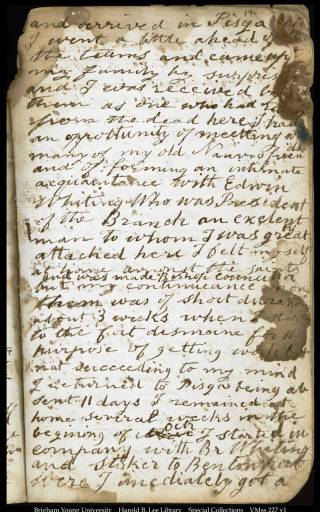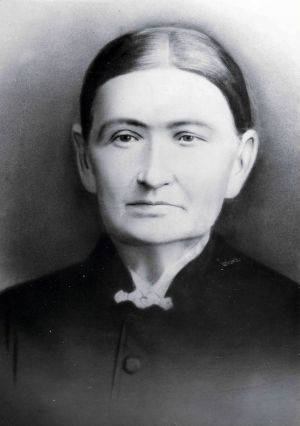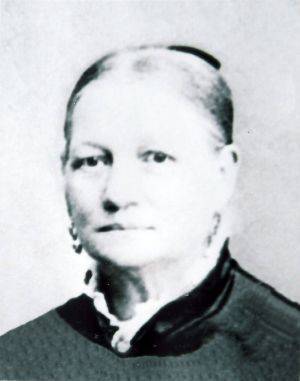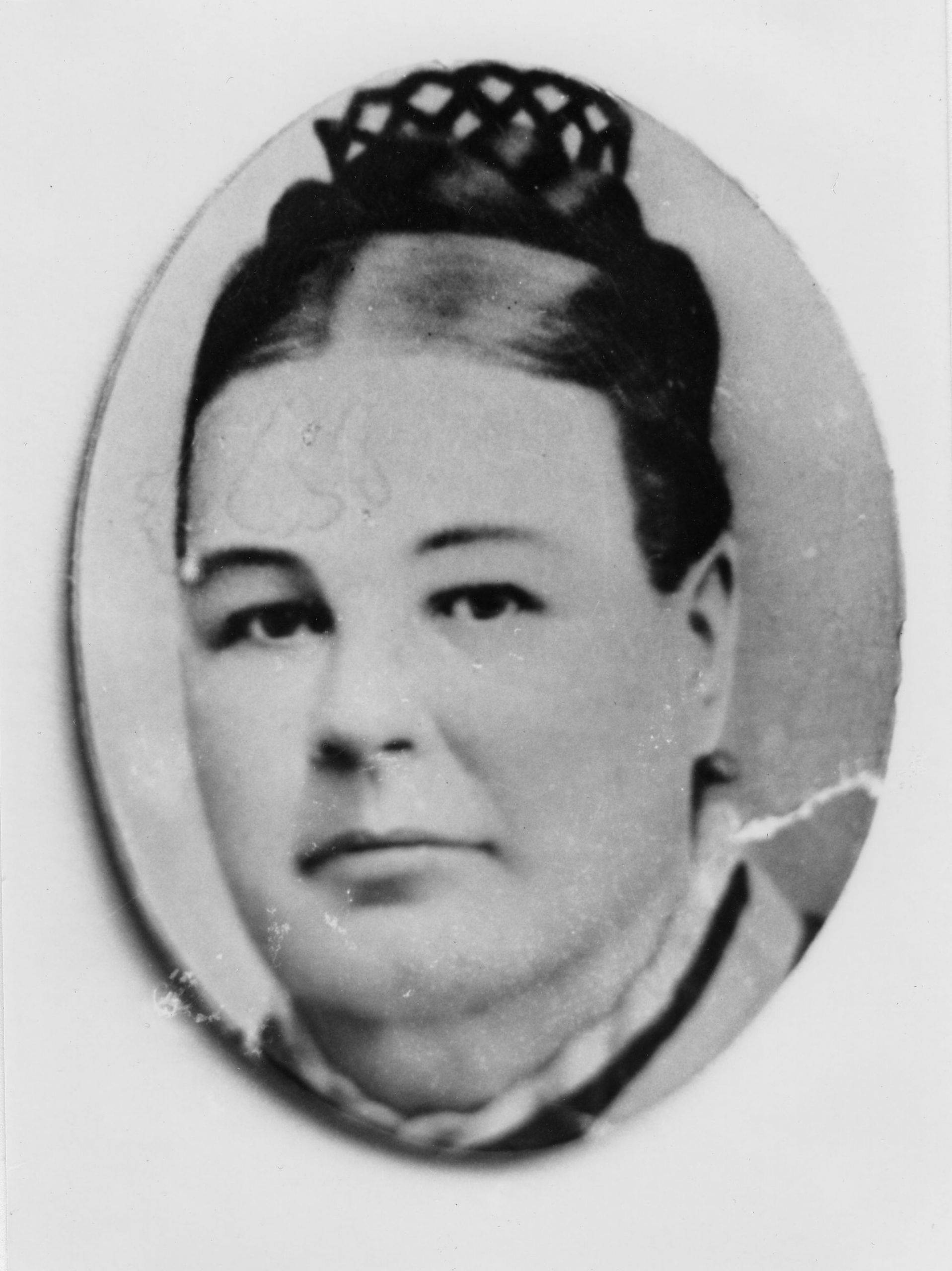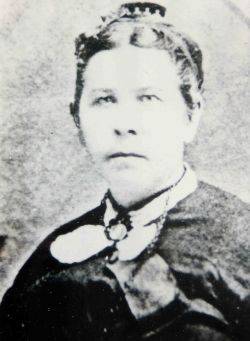Source for the whole article is : http://www.fold3.com/page/283366385_samuel_kendall_gifford/
There are entries on pg. 9, 10, 14, 16, 17, 20 and 33 specific to the Whiting story that have been identified in this account. The time spent at Mt. Pisgah, the chair shop, Manti history are helpful in telling the Whiting story. I have selected the Whiting stories and have underlined the name Whiting for easy retrieval. There are several accounts of the activity of Edwin Whiting, one of William Whiting and one of Mary Cox Whiting in this journal.
Pg.9
I then returned to Mt. Pisgah to make a fitout for the Mountains.
This was the winter of 1847-8. I again went into the chair shop with the Whitings, with whom I had labored in Illinois. After I had been here some time, Old Mother Head, who was then the wife of Father Elisha Whiting, took sick and died in one week from the time she took sick.
A short time after Father Whiting died also with one weeks sickness. The old gentleman was fixing to go to Quincy, Ill., where we had a regular market for our chairs, hoping to sooner get a fitout for the mountains. But death deprived him from going any farther with the Saints in their western journey.
I stayed in Mt. Pisgah and worked in the chair shop until the fall of 1848 when I married Lora Ann, daughter of Freeborn and Ann (Anna) Knight DeMill. Anna was the daughter of Joseph and Polly Knight. We were married by President Edwin Whiting on Sunday the 1st day of October, 1848.
Pg.10
In the spring of 1849 our President, Brother Edwin Whiting, started for the Valley of the Mountains. I said to him, “Edwin, (I had been used to calling him by his name) I am making four hundred chairs this year and go to the Valley next year.” His answer was, “You can’t do it.” I said, “I will do it.” The emigration for the California gold mines was passing through pretty briskly. Hay had raised from $2.00 to $20.00 per ton and corn from ten cents to $3.00 per bushel. Mechanics like myself had to buy both hay and corn to feed. President Whiting, just before starting on his journey, advised the Saints to not sell for high prices to their brethren who were obliged to buy corn, hay, etc. There were two men that listened to his council. If it had not been for those two men of whom I bought my corn, I could not have come to the Valley the next year as I had declared I would. The names of those men were Freeborn DeMill and Josiah Perry. God bless them.
Pg. 14
The Indian troubles, known as the Walker War, then commenced. A strong guard had to be placed around our town. I was then Orderly Seargent of Captain Edwin Whiting’s Company, the first military company that was organized in Sanpete.
Pg. 16
June 21, 1856 Edwin Whiting was elected Major of Sanpete Militia in place of Nelson Higgins who was called on a mission to Carson Valley. Brother Whiting is on a mission to Ohio but is expected home soon. Elijah Averett was elected Second Lieutenant of Company B the 24th of August 1856. Major Edwin Whiting got home from his mission to Ohio. Sunday, Brother Whiting preached a noble Gospel discourse.
Pg. 17
August 30, 1856 I attended Court Martial. Sunday 31st, Inst. Brother Elisha Edwards got home from his mission to Ohio. Preached in the forenoon and Father Morley and Edwin Whiting preached in the afternoon. Their instructions were excellent. Thursday, Sept. 4, 1856 I attended Fast Meeting.
Pg. 20
Drove to Ft. Ephraim and Bishop Kafod joined us the next morning with about 30 wagons with tithing for the city. Tuesday 3rd, bad crossing of Sanpitch on account of broken ice but got across without any damage. Drove to the Duck Springs and camped for the night. Wednesday 4th, started early in the morning and drove to the Uinta Springs and stopped to water our teams, after which thirty-three men were selected to drive on and break the road across the divide. Bishop Snow took the lead, I was one of the number. The remainder stopped for the night. We drove about two miles when the snow began to crust over so we were obliged to stop. It was then sundown. We fed our cattle. Some of us went about a half mile for wood. The snow was about two feet deep and we broke through about half of the time. After returning to our wagons and warming ourselves a little, for it was very cold, Bishop Snow, Father Israel Shoemaker, William Whiting, (Note: The oldest child of Edwin and Elizabeth) D. D. Washburn and myself started afoot to break the road. We all took hold of hands, forming a line across the road and jumping upon the crust so that the wagons were able to follow up with some four to seven yoke of oxen to the wagon. When we were about half way across the divide we met Elder Hyde going to Sanpete. His carriage was so light the crust bore it up. Neither did the horses break through so we went over safe. We were joined by the others who assisted us in breaking the crust by jumping upon as before until we got over the divide, some five or six miles.
Pg. 33
Typical of Mormon colonies, the education of the young was not to be neglected. The first school classes were held in the cabins of the Saints, but soon a small log schoolhouse was erected and Jesse W. Fox was installed as the Pioneer teacher. He was soon followed by Mrs. Mary Whiting. Samuel Kendall Gifford was a learned man for his day and read extremely well. He became a teacher on an elementary level soon after his arrival in Manti. He taught the Gospel whenever possible and was a teacher in the first Sunday School organized in Manti.
Source: Diary of Samuel Henry Gifford http://www.fold3.com/page/283366385_samuel_kendall_gifford/
